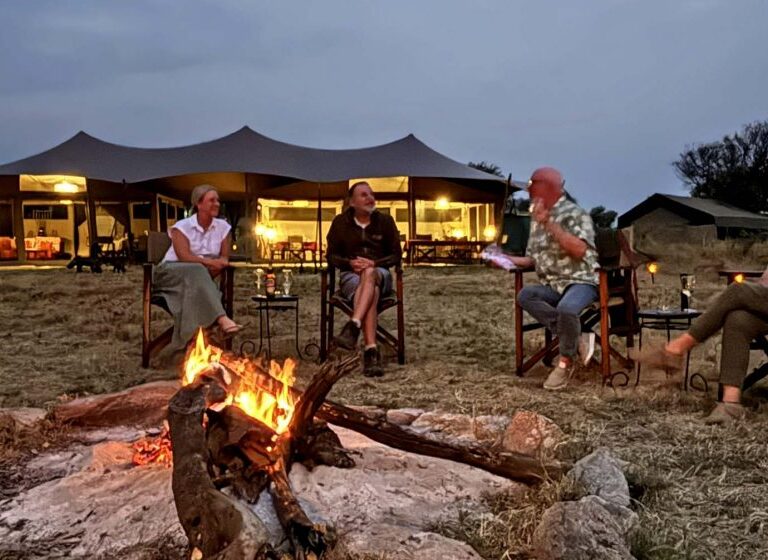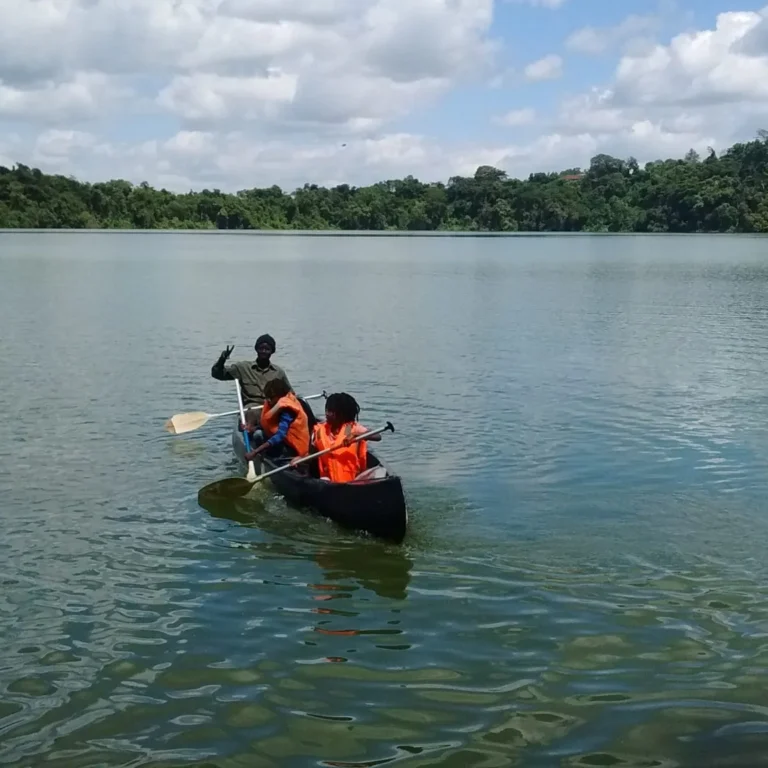Top 10 Most Deadliest Critters of Tanzania.
Discover Tanzania, a country renowned for its stunning landscapes and diverse wildlife, is home to some of the most dangerous animals in the world. These critters, while fascinating to study, can pose serious threats to humans. In this article, we delve into the top 10 deadliest critters of Tanzania, exploring their habitats, behaviors, and the dangers they present.
Africa’s 15 most dangerous animals include the Nile crocodile, known for its powerful jaws and aggressive nature; the African lion, a formidable predator with a powerful bite; the African elephant, which can be deadly due to its size and strength; the hippopotamus, responsible for many fatal encounters due to its territorial behavior; and the Cape buffalo, known for its unpredictable and aggressive nature. Each poses significant risks to humans in their respective habitats. There are two predators that can be considered the most ruthless in Africa. The first is the African Wild Dog, also known as the Painted Wolf. Here is list of The Most Deadliest Critters of Tanzania.
1. African Lion
Panthera leo, the African lion, is one of Tanzania’s most iconic predators top 10 deadliest critters of Tanzania. Known for their majestic manes and powerful build, lions are apex predators in the savannahs of the Serengeti and other national parks.
Habitat and Behavior: Lions live in prides, which are social structures that help them hunt efficiently. They primarily hunt large herbivores like wildebeest and zebras.
Dangers: Despite their grandeur, lions can be extremely dangerous to humans. Incidents of lions attacking people, especially in rural areas near their habitats, are not uncommon. The key to their danger lies in their strength, speed, and predatory instincts.
2. Nile Crocodile
The Nile crocodile (Crocodylus niloticus) is a formidable predator found in many of Tanzania’s rivers and lakes.
Habitat and Behavior: These reptiles prefer freshwater environments like rivers, lakes, and marshlands. They are opportunistic feeders and can take down prey much larger than themselves.
Dangers: Nile crocodiles are notorious for their aggressive nature and powerful bite, which can exert incredible force. They often attack unsuspecting prey at the water’s edge, including humans.
3. Black Mamba
The Black Mamba (Dendroaspis polylepis) is one of the most feared snakes in Africa, known for its speed, aggression, and potent venom.
Habitat and Behavior: Black mambas inhabit savannahs, rocky hills, and forests. They are agile and can move quickly both on the ground and in trees.
Dangers: Their venom is highly toxic, causing paralysis and death within hours if untreated. Despite their reputation, black mambas usually avoid humans but will strike repeatedly if threatened.
4. African Elephant
African elephants, specifically the bush elephant (Loxodonta africana), are the largest land animals on Earth. While generally peaceful, they can be very dangerous when provoked.
Habitat and Behavior: Elephants are found in various habitats including savannahs, forests, and swamps. They are social animals that live in herds led by matriarchs.
Dangers: An angry or scared elephant can charge at incredible speeds and cause massive destruction with their tusks and trunks. Human-elephant conflicts often occur in areas where human encroachment overlaps with elephant territories.
5. African Buffalo
The African buffalo (Syncerus caffer) is often regarded as one of the most dangerous animals in Africa due to its unpredictable nature.
Habitat and Behavior: These large bovines are found in savannahs, swamps, and floodplains. They live in large herds that can sometimes number in the hundreds.
Dangers: When threatened, buffaloes can become extremely aggressive. Their sheer size, strength, and formidable horns make them capable of inflicting serious injuries or death.
6. Hippopotamus
Hippopotamuses, or Hippopotamus amphibius, are deceptively dangerous, often underappreciated for their aggressive tendencies.
Habitat and Behavior: Hippos are commonly found in rivers, lakes, and swamps. They spend much of their time submerged in water but come onto land to graze at night.
Dangers: Despite their bulky appearance, hippos can run at speeds of up to 30 km/h on land. They are highly territorial and have been known to attack boats and humans that venture too close.
7. Puff Adder
The Puff Adder (Bitis arietans) is a venomous snake responsible for more snakebite fatalities in Africa than any other species.
Habitat and Behavior: Puff adders are highly adaptable and can be found in various habitats, from savannahs to forests. They rely on camouflage to ambush their prey.
Dangers: Their venom is cytotoxic, causing severe pain, swelling, and tissue damage. They strike quickly and can bite multiple times in quick succession if threatened.
8. Mosquitoes
Though small, mosquitoes are among the deadliest critters in Tanzania due to their role as vectors for diseases.
Habitat and Behavior: Mosquitoes thrive in areas with standing water, which they need for breeding. They are most active during dusk and dawn.
Dangers: They transmit diseases like malaria, dengue fever, and Zika virus. Malaria alone is responsible for thousands of deaths in Tanzania each year, making mosquitoes one of the most dangerous animals in the region.
9. Spotted Hyena
The spotted hyena (Crocuta crocuta), known for its eerie laugh one of the top 10 Deadliest Animals in Africa, is both a scavenger and a proficient hunter.
Habitat and Behavior: found in savannahs, grasslands, and forests. They live in clans led by females and have complex social structures.
Dangers: Spotted hyenas are strong and have powerful jaws capable of crushing bones. Aggressive when defending their territory food known to attack humans.
10. Tsetse Fly
The Tsetse fly (Glossina spp.) is infamous for transmitting African trypanosomiasis, commonly known as sleeping sickness.
Habitat and Behavior: Tsetse flies inhabit rural areas where they breed in the vegetation along rivers and lakes.
Dangers: Their bite transmits parasites that cause sleeping sickness, a disease that can be fatal if not treated. Symptoms include fever, headaches, and in severe cases, neurological damage.
Poisonous Insects & Spiders in Tanzania (Among Other Things)
- And Other Critters.
- Spiders in Tanzania. Brown Recluse Spider/Violin Spider. Yellow Sac Spider.
- Baboon Spider.
- Scorpions in Tanzania. Whip-Scorpion. …
- Driver Ant.
- Other Poisonous Insects In Tanzania. The Spider Wasp.
- Mosquito.
- Poisonous Insects in Tanzania on Safari.
What are the Most Dangerous Animals in Africa?
- Lion: Length: 1.8 – 2.1 m, 1.6 – 1.8 m
- Nile crocodile: Length: 4.2 m, 2.4 – 3.8 m
- African elephant
- Black mamba
- Rhinoceros: Length: White rhinoceros: 3.7 – 4 m, Indian rhinoceros: 3.7 – 3.8 m, Black
- Great white shark: Length: 4.6 – 4.9 m, 3.4 – 4 m
- Hippopotamus: Length: 2.9 – 5 m
- Cape buffalo
- Mosquito
- Puff adder
- Spotted hyena: Length: 95 – 170 cm
- African Rock Python
- Leopard: Length: 90 – 160 cm
Conclusion: The Most Deadliest Critters of Tanzania
Tanzania’s rich biodiversity includes some of the deadliest animals on the planet. While these critters play crucial roles in their ecosystems, they can pose significant risks to humans. Understanding their behaviors and habitats is essential for both appreciating their beauty and ensuring safety when encountering them.








